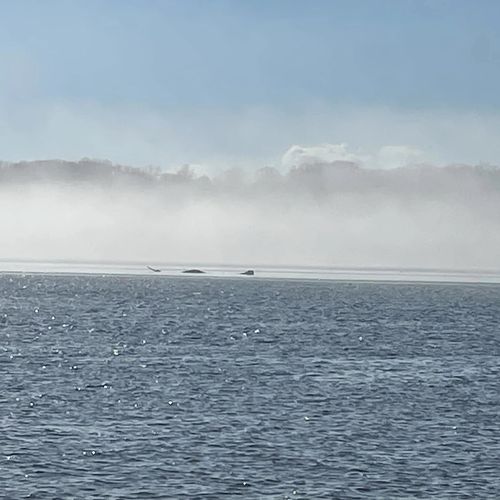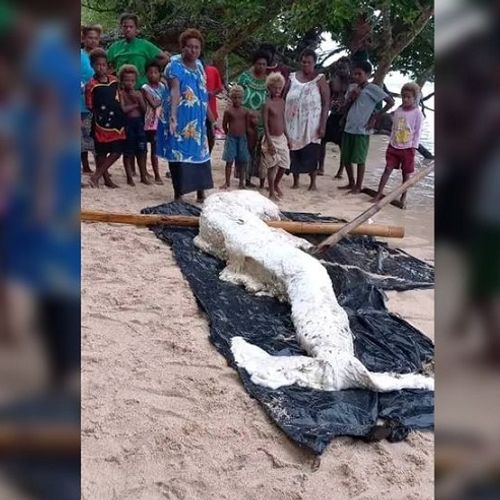| ID | #1662621037 |
| Added | Thu, 08/09/2022 |
| Author | July N. |
| Sources | |
| Phenomena | |
| Status | Hypothesis
|
Initial data
In Wales, a strange creature crawled out of the sand and greeted a five-year-old boy who was relaxing on the beach with his parents. This is reported by Daily Post.
The encounter with the bizarre creature occurred at the end of August, when Joseph from Liverpool and his parents came on vacation to the neighborhood of Porthmadog. The boy's mother, Debbie, filmed her son happily running on the sand and frolicking, and then posted the video on a social network.
It was thanks to this video that the family drew attention to the creature. In the footage shot by Debbie, it is noticeable how it looks out of the sand behind the boy and turns in his direction. At the same time, it seems that it nods, as if welcoming him.
Anglesey Sea Zoo director Frankie Hobro studied the video and admitted that she could not determine with certainty which species the creature belongs to. In her opinion, there are two options. It is either a bird or a crab, which is located inside a sandy hillock formed due to the tides.
"Without additional data, it's hard to say exactly what it might be. It's kind of a mystery. But it has a rational and mundane explanation. Whatever it is, it's nice to see that people are interested in the life of marine life," concluded Hobro.
Original news
A family on holiday in Gwynedd had a shock when reviewing their video memories. Footage of their little boy running across a beach appeared to show a mysterious creature popping out from the sand and waving its head as if to say hello.
“I was like, oh my God, what is that!?” said mum Debbie Clintworth. “It freaked me out a bit.”
Debbie, husband Stephen and five-year-old Joseph, from Liverpool, were enjoying a week’s holiday at the Haven Greenacres Holiday Park at Morfa Bychan, near Porthmadog. With them was Stephen’s father, though he was not on the beach at the time the so-called “Morfa Monster” made its appearance.
Next to the holiday park lies Black Rock Sands beach, which is bisected by a stream running through the village to the sea. Little Joseph was splashing around in the stream when his mum grabbed her mobile phone to film a short clip.
It was only later that she realised something odd had happened. “I never even noticed it on the day,” she said. “I posted the clip on my Instagram account and it was only when watching it back later that I saw it.
“From the video, it looks like the thing turned its head when my little boy made a splash in the stream. I reposted it and some friends messaged me saying they’d also seen it but hadn’t liked to say anything!” The "creature" appears briefly right at the end of the clip.
Debbie doesn’t think anyone else would have seen it on the day (August 26). The family was near the dunes and, it being late afternoon and at low tide, the water’s edge was some distance away. The beach has recently been the subject of much discussion about overnight camping by motorhomes and others
“There weren’t many people on the beach as it wasn’t that warm - there were just a few people walking by the sea,” she said. “Some people have suggested it might have been litter blowing in the wind. But the weather was calm and there wasn’t much wind at all.
“It’s really baffled me. I mean, there are always lots of wormholes in the sand but it was nothing like that. I wanted to find out what it was, which is why I shared the clip on the Abersoch Facebook page in case any fishermen or boat owners had any ideas.”
The feedback was mostly of astonishment. “Oh my goodness!!!” said one woman. “What the actual...,” said another. “I‘ve never seen anything like that, moves a bit like a fish head.”
One man suggested it might be a mole. Another, tongue firmly in cheek, reckoned it might be a four-inch version of the creature from the film Tremors.
Given the unenviable task of providing some kind of lucid explanation was Frankie Hobro, owner and director of Anglesey Sea Zoo. She has plenty of experience of dealing with marine oddities, having established a research programme to explore different coloured lobsters being found around the UK coast.
Asked to examine the grainy footage, she said it was “impossible” to provide definitive answers without seeing more images. But she said it was an interesting clip and she welcomed Debbie’s interest in the marine life of west Wales.
Having viewed the footage, Frankie has one or two theories. “One possibility is that it shows a seabird looking away. But that’s unlikely given its size,” she said.
“Another is that it is a lugworm cast, which tend to appear at low tide near rockpools or streams where the sand is wetter. The casts tend to be conical in shape and are darker in colour because of the wet sand.
“Within the cast, a crab might be half buried and its movements might cause the cast to shift. Alternatively, there might be litter on the cast which is disturbed by changes in air pressure below the sand, caused perhaps by a lugworm, crab or even the boy running past.
“It’s hard to know exactly what it might be without more evidence – it’s a bit of a puzzle. But there will be a rational and mundane explanation. Whatever it is, it’s good to see people taking an interest in coastal marine life.”
The coiled casts of lugworms – otherwise known as sandworms – are a familiar sights on UK beaches at low tide. The animal itself is rarely seen. Measuring up to five inches (13cm), they live in a U-shaped burrows.
Debbie will probably never know exactly what Joseph encountered on the beach that day. Other explanations given by her friends range from a crab to a jellyfish. “None of them seem quite right,” she sighed.
Hypotheses
Famous creatures

There are a huge number of different living organisms on our planet. According to recent estimates, the number of species of organisms on our planet is approximately 7-10 million. However, only 15% of the data are described today.
According to the calculations of Canadians, 2.2 million species live in the world's oceans, 6.5 million on land. There are only about 7.8 million species of animals on the planet, 611 thousand fungi, and 300 thousand plants.
Investigation
Resume
Similar facts
Log in or register to post comments









